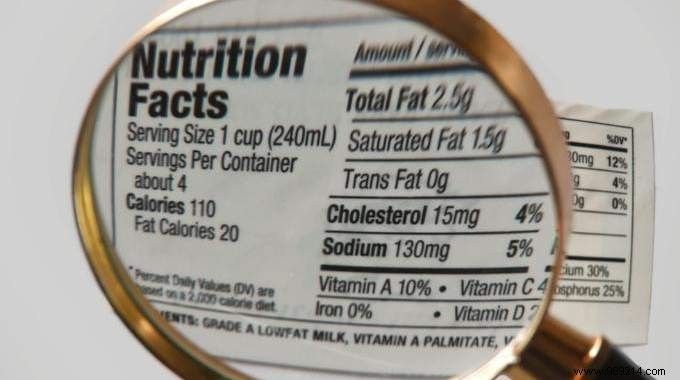
Product information displayed is growing but not less complicated to decipher. Here are some very useful tips for decoding food labels and eating healthy!
Learning to decode the information given on products can be a good way to know if what you eat is really what you think. People prone to allergies, diabetes, cholesterol have every interest in reading the list of ingredients and nutritional labeling to stay in shape and spend less money on the various treatments and medications offered.
As consumers, we don't always know how to differentiate between essential and less important information. I give you in this tip some indications to better understand.
First of all, note that the foods are listed in descending order:That is to say that at the top of the list we will find those in the greatest quantity in the finished product.
When I go shopping, I therefore avoid buying a bar of chocolate that has more sugar than chocolate, for example. I also avoid products with an endless list of ingredients. In general, the longer the list, the greater the risk of having lots of harmful additives inside.
These are not yet present on all products because they are only mandatory if the manufacturer wants to add a qualitative mention.
For example, such "source of fiber". But beware, these mentions are purely commercial and misleading. When this information is listed, I always read the nutrition label.
Thus, I pay attention to the salt content to avoid cardiovascular diseases, the amount of sugars (carbohydrates) and lipids (fats) for my figure and my health.
In general, the energy value in calories is a good way to get your bearings.
Whoever says "Less than..." wants to insinuate "More...". This is the great danger! You have to know the difference between marketing information and health information.
A consumer association (the CLCV) has noted, for example, the existence of "light" slimming products with more calories than their standard counterparts. Especially in cookies.
Low-fat products may also have more sugars than normal. All the more reason to read the nutrition facts label!
When I learned that there are good fats, my eyes twinkled "Nice, I'm going to be able to enjoy myself again!". Yes, but which ones?
To know:
Saturated fatty acids (SFA) are bad, unsaturated fatty acids (IGA) are good.
Essential fatty acids or Omega 3 and 6 are AGI. Sources of vitamins and energy, they are called "good fats" because they help us above all to lower our cholesterol levels. Who would've believed that ? A drizzle of olive or walnut oil on my salmon and I fill up on AGI!
In case of diabetes, it is the slow (or complex) carbohydrates that must be reduced. A diabetic can therefore make up for it on fruit, chocolate, milk, or cereal bread. On the other hand, he will avoid potatoes, honey, cornflakes, white and wholemeal bread or carrots. For non-diabetics, it's the same! The slower the sugars, the less you will be prone to feelings of hunger. Good plan to keep the line!
Staying healthy is the best way to save money without spending. All you have to do is (well, just, it's still difficult) to change your eating habits and consumption behaviors. Good luck!
Well, I hope it wasn't too complicated! If you have any questions, don't hesitate to ask them in the comments and I'll answer you!